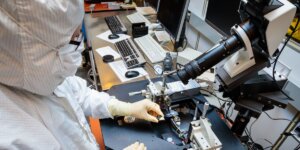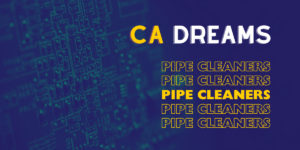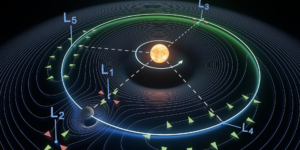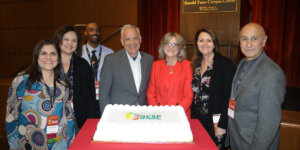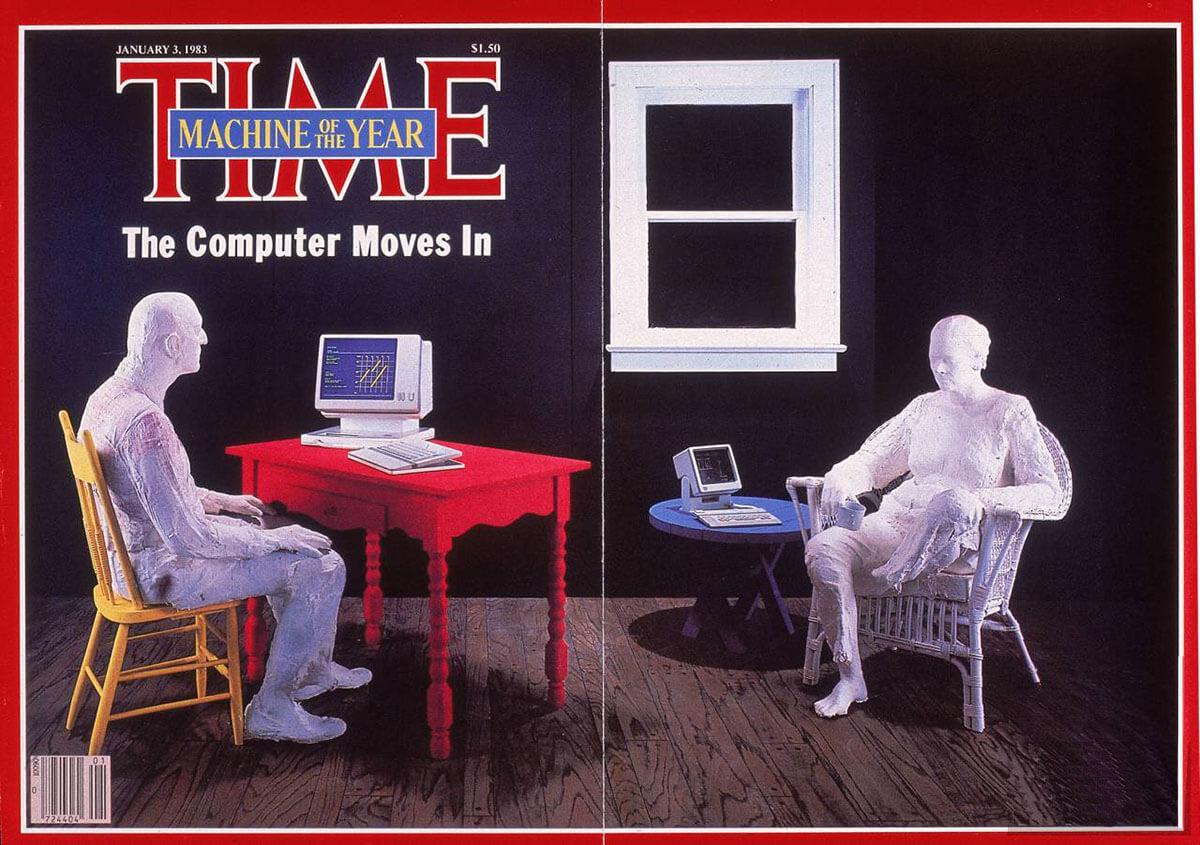
The 1982 Machine of the Year cover, with a plaster person by sculptor George Segal contemplating a concept computer which TIME commissioned from a design firm.
Forty years ago, and for the first time, the editors of Time magazine selected a non-human recipient as their “Person of the Year.”
Sensing that the world had fundamentally changed, the January 3, 1983, issue, published on December 26, 1982, declared the personal computer “The Machine of the Year.” Of course, the realization that small computers serving individuals both at work and home would become part of everyday human experience in the future was just one aspect of a story that had started many years before and continues today.
What has made this all possible is the invention of the transistor, its integration with many transistors, and its successful manufacture into inexpensive electronic chips. In totality, a remarkable achievement of science, technology, and commercialization. The chip is, without doubt, the essential hardware element that enables the benefits of computer and communication resources to be available to essentially all humans that inhabit our planet.
It is worth reflecting for a moment to consider the progress that has been made. In 1974, Intel Corporation introduced the famous 8080, an 8-bit microprocessor in single-chip form containing 4,500 NMOS transistors in a 20 mm² area and driven using a 3 MHz clock. The minimum feature size of the transistors used was 6 microns. Today, the Apple M2 64-bit processor has 20 billion CMOS transistors in a single chip of area 155 mm² and operates using a 3 GHz clock. The minimum feature size of the transistors used by the M2 processor is just a few nanometers — about twice the diameter of a human DNA strand — and on average there are about 130 transistors crammed into every square micron of chip area.
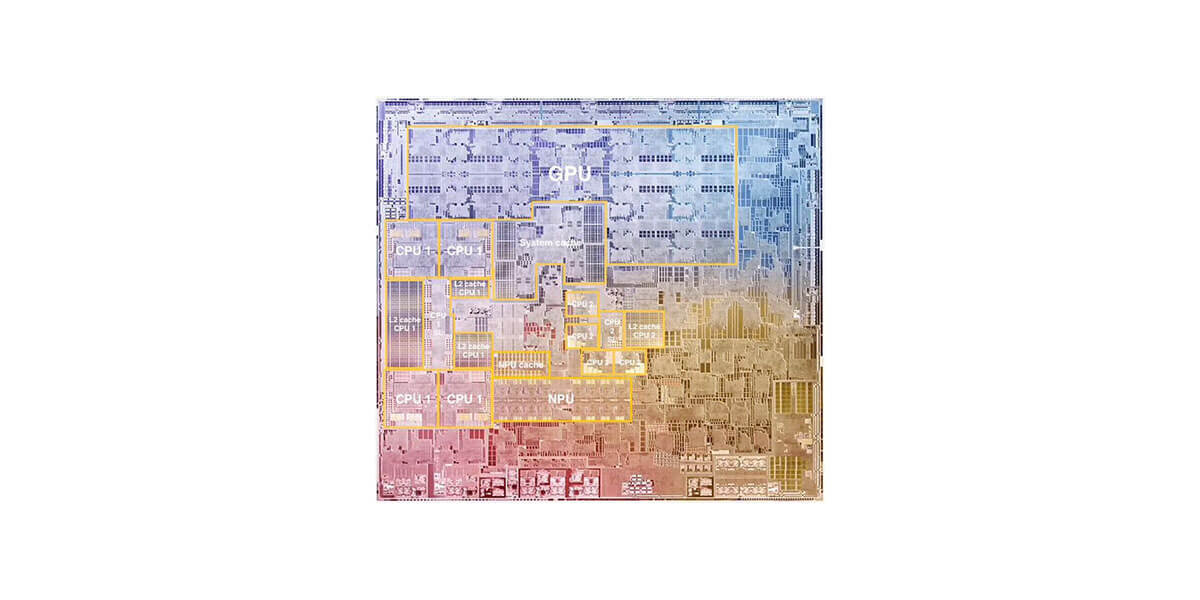
Apple M2 chip
The resulting enhancement in computer performance, mainly due to advances in chip manufacturing over the intervening 48 years, is truly remarkable. The increase in number of transistors on the M2 chip relative to the 8080 is more than a factor of half a million, the increase in clock frequency is a factor of 1000, and the increase in word length is a factor of 8. Multiplying these numbers together one may obtain an approximate measure of increase in performance. The result is an astonishing improvement of about five billion!
The crucial role chips play in enhancing key aspects of social interaction and their contribution to the efficiency of the modern economy is, at last, recognized by politicians and the public in general. As The New York Times wrote last July: “A global shortage of computer chips had stalled the manufacturing of cars, computers and even dog-washing machines.”
As The Washington Post noted: “Computer chips are everywhere. There are dozens in every car, helping regulate engine temperatures and stabilize suspension systems. They manage water treatment plants, power lines and Internet cables. Almost any product that plugs into a wall now carries a tiny computer inside. The modern world runs on them.”
Computer chips appear to be one of the few things that Republicans and Democrats can agree on. This year’s taxpayer-funded CHIPS Act to directly support U.S. manufacturing of advanced microelectronics technologies along with massive corporate investment is a tangible recognition of this.
Of course, the personal computer of the 1980s is now largely a relic of the past and has long been replaced by laptops, tablets, and, significantly, by the smart cellphone. It is worth remembering that there was a time before cellphones, a primitive era that might be called “BC”! For some, it is difficult to imagine a world in which instant messaging and social media are not available to be used to share concepts, ideas and abstractions.

Pech Merle prehistoric cave art
The desire to share experiences goes back many thousands of years and is documented by, for example, the remarkable cave paintings of Pech Merle dating from before 27,000 years ago. Other forms of expression that have had enormous cultural impact include language, literature, mathematics and music. A case can be made that a new pinnacle of human achievement is precision manufacturing of electrical circuits with control at the nanometer scale. This has enabled contemporary electronics and access to opportunities for expression in a truly extraordinary computer-driven cyber world. Only time will tell how society chooses to engage with these new capabilities. It seems that the contribution of computer-based systems to human creativity and development of knowledge is still in its infancy. There is much more that can and should be done to advance the underlying technologies and to understand applications capable of changing the human experience.
And, forty years after Time Magazine declared the personal computer the machine of the year, 2022 truly is the Year of the Chip!
— Tony Levi, chair of the Ming Hsieh Department of Electrical and Computer Engineering – Electrophysics, is a professor electrical and computer engineering and physics and astronomy
Published on December 12th, 2022
Last updated on May 16th, 2024




